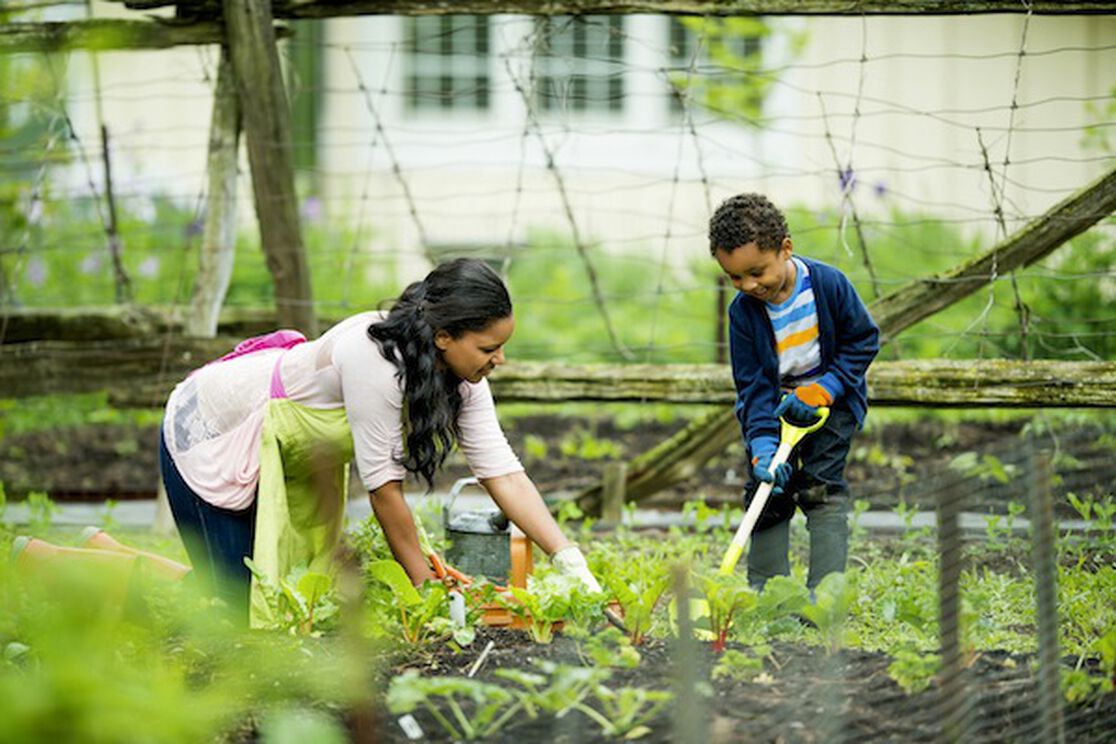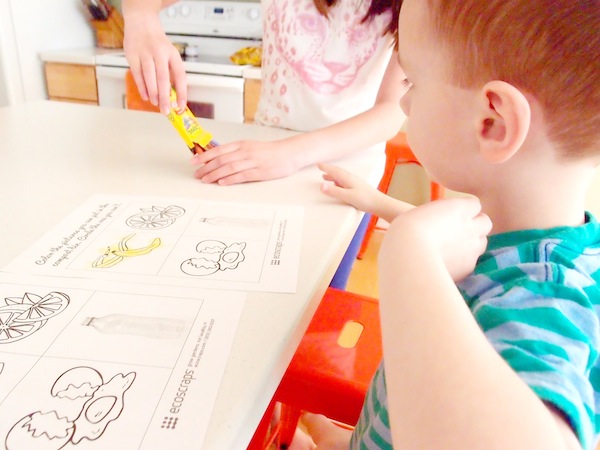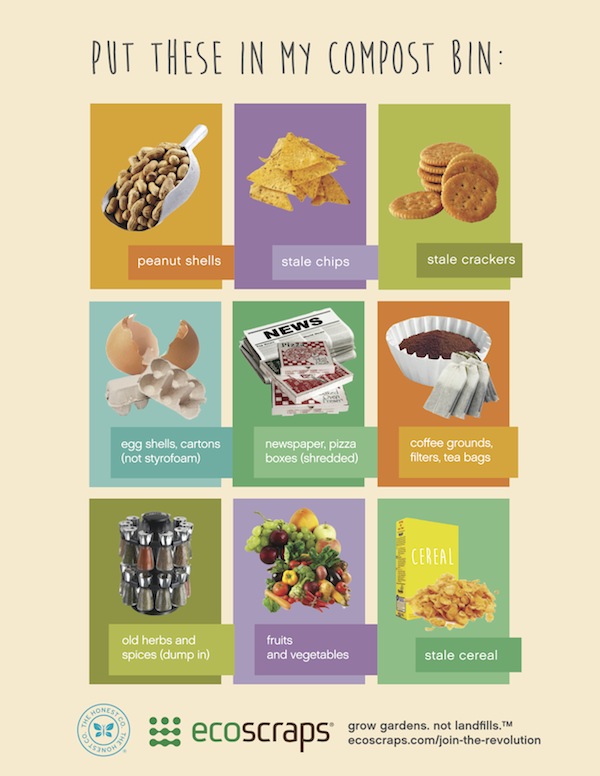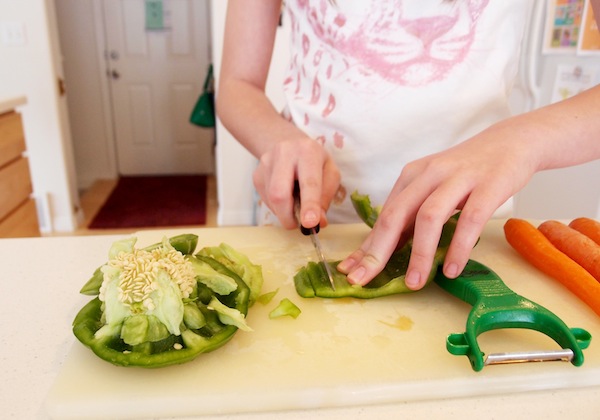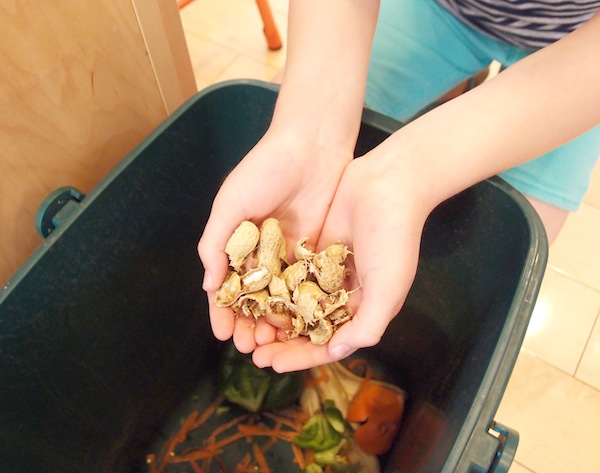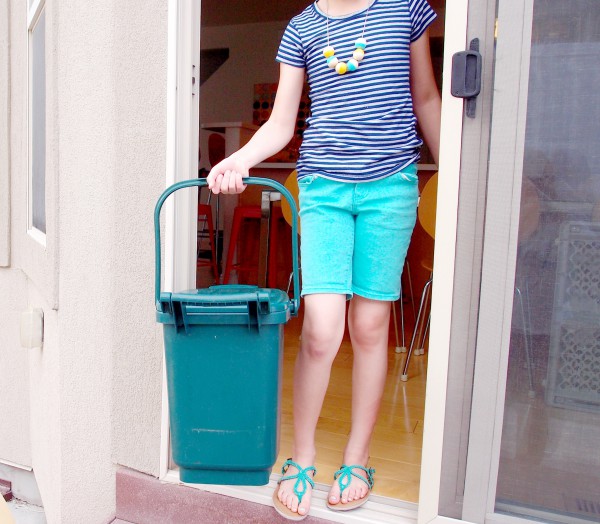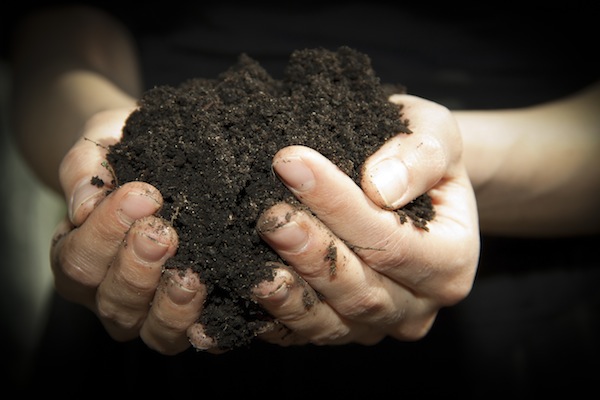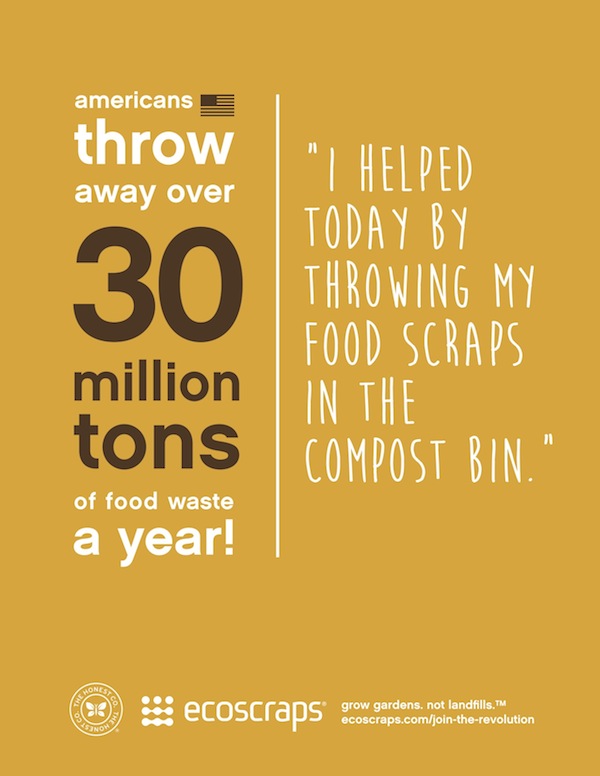Starting a home composting program is easier than you think. Did you know Americans throw away more than 30 million tons of food waste per year? Many items found in your kitchen can be spared from the trash can. Thanks to our friends at ecoscraps you can start your home composting bin today and help lower this growing statistic.
Eight Easy Steps to Start Composting
1. Pick a location
It’s important to pick the right location for your composting area. The ideal spot would be in your backyard, close to a water source, and in a partially shaded area.
2. Choose how to store your compost
You may choose to compost in an enclosed area, in a compost bin, or in a compost tumbler. Buy a smaller compost bin for your kitchen. Empty the contents of that bin every 2-3 days into your outdoor composting area.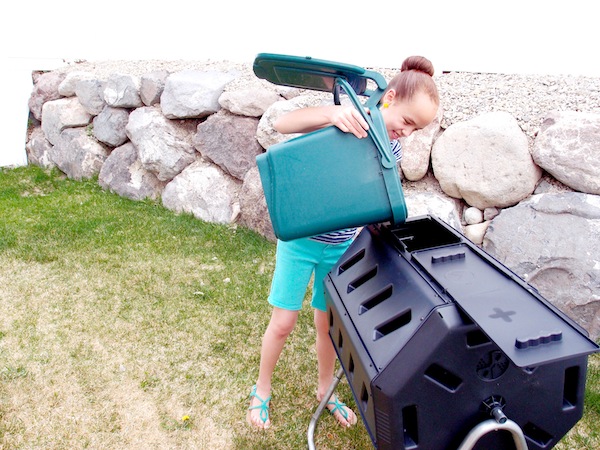
3. Educate your family on what to compost
Educating yourself and teaching your family what can be composted is the best way to ensure a healthy compost bin. You can use educational reminders like our "Put These in My Compost Bin" sheet and "Compost Coloring" sheet, or visit great Web sites like Mother Nature Network and Organic Gardening to learn what to compost.
4. Know what NOT to compost
Never compost the following items (for reasons of health, hygiene, and inability to break down):
- Meat or meat scraps
- Bones
- Fish or fish bones
- Plastic or synthetic fibers
- Oil or fat
- Per or human feces
- Weeds that have gone to seed
- Disposable diapers
- Glossy paper or magazines
- Cat littler
For a full list of items, check out Mother Nature Network's "30 Things You Should Never Compost or Recycle."
5. Find the best balance for your compost
Composting, like gardening, is a science. Mother nature needs the right mix of carbon and nitrogen to turn your food scraps and yard waste into rich, healthy compost. Carbon and nitrogen sources come in the form or “Green” and “Brown” waste.
Green waste is rich in nitrogen and will give your compost pile the moisture and heat it needs to break down quickly.
- Fruits and vegetables scraps
- Coffee grounds, tea leaves and bags
- Stale bread, crackers and chips
- Eggshells
- Holiday wreaths
- Grass clippings
- Fresh leaves
- Houseplant trimmings and deadheads from flowers
Brown waste is rich in carbon and will give your pile the aeration it needs to build healthy compost. As “Brown” waste tends to break down more slowly, it’s a good idea to chop them into smaller pieces if possible.
- Shredded newspaper, office paper, and school papers
- Torn up plain corrugated cardboard boxes (now with glossy coatings)
- Fall leaves, chopped-up twigs, and small branches
- Nut shells (avoid walnut shells)
- Used napkins (no chemicals)
- Used paper coffee filters
- Paper egg cartons, torn into small pieces
- Shredded or torn brown paper shopping / lunch bags
- Wood chips and sawdust
For a complete list of green and brown waste, check out Organic Gardening's "50 Things You Can Compost."
6. Layer your compost
It’s important to layer your “Green” and “Brown” waste, so they have contact with each other and to avoid any large clumps.
If possible, start your compost with a layer of “Browns” like leaves, to help keep enough air near the bottom.
Try a compost mixture of anywhere from three parts “Brown” waste to one part "Green” waste to half and half, depending on what materials you have.
Sprinkle each layer with water as you build your compost pile.
7. Maintain your compost
For healthy compost that will break down within 3 to 6 months, it’s important to do the following:
• Ideally your pile will heat up to 120º F to 160º F — this can be tested with a soil thermometer.
• Sprinkle with water as needed to keep the pile moist.
• Mix, tumble, or aerate mixture a minimum of 2 to 3 times per week.
• Add a healthy mixture of “Greens” and “Browns.”
• Check on the mixture regularly and remedy any issues.
8. Use your compost
Once your mixture is a light, fluffy mixture that looks like soil and no longer gives off heat, it is ready to use. Use your compost to plant flowers, vegetables, or save it for your next planting season.
Do you have an at-home compost? Share your tips and tricks in the comments! And learn more about ecoscrap's mission of growing gardens, not landfills on their blog.
We aim to provide you with the most honest and credible information possible. This article was reviewed for accuracy by The Honest Team and its internal technical experts.
blog_review_statement